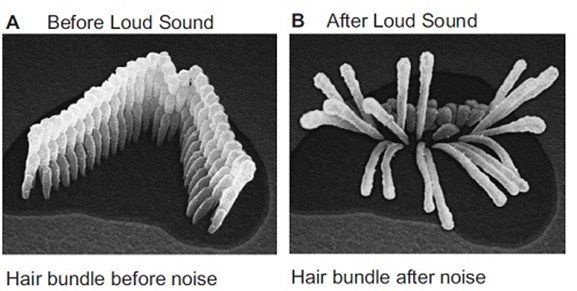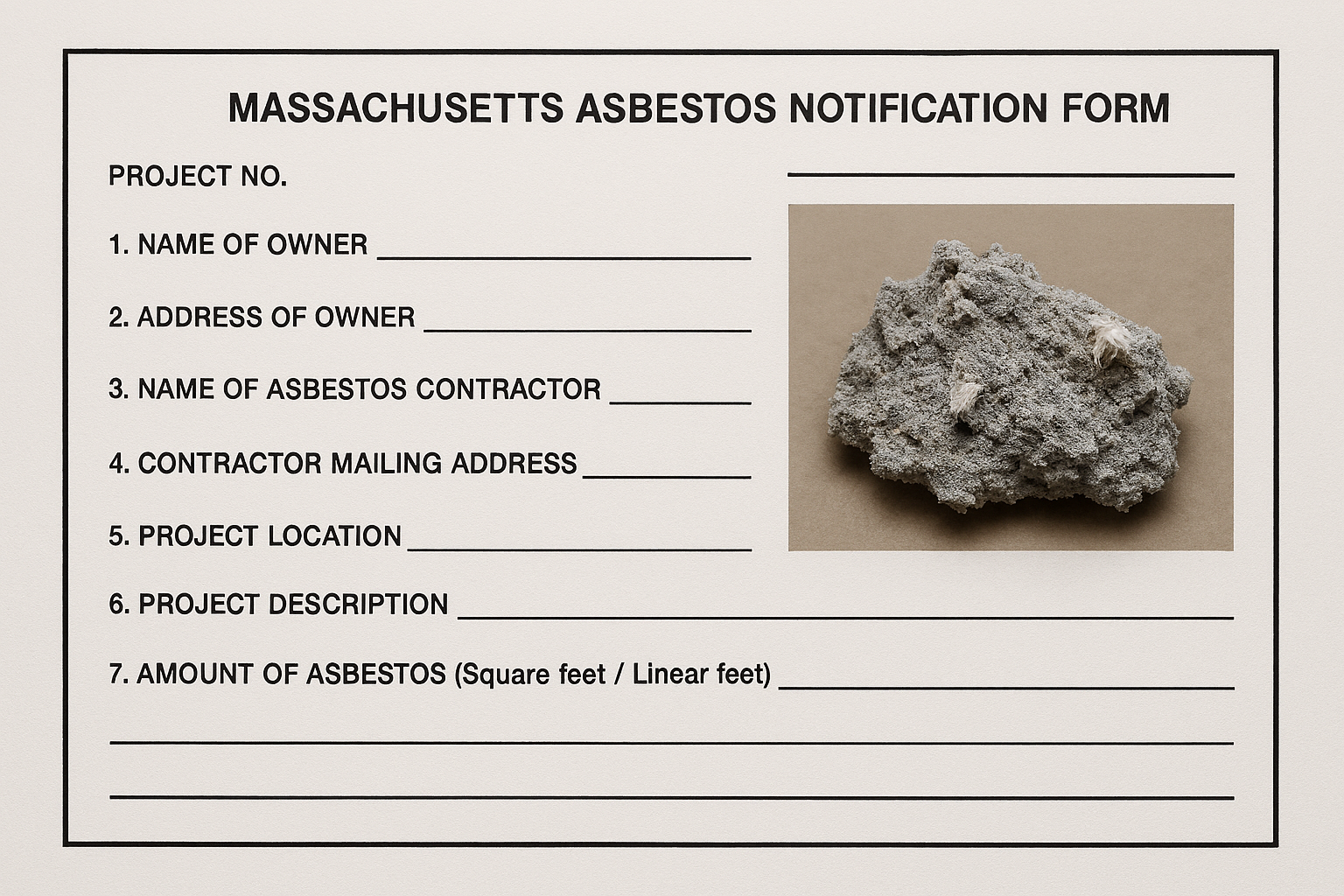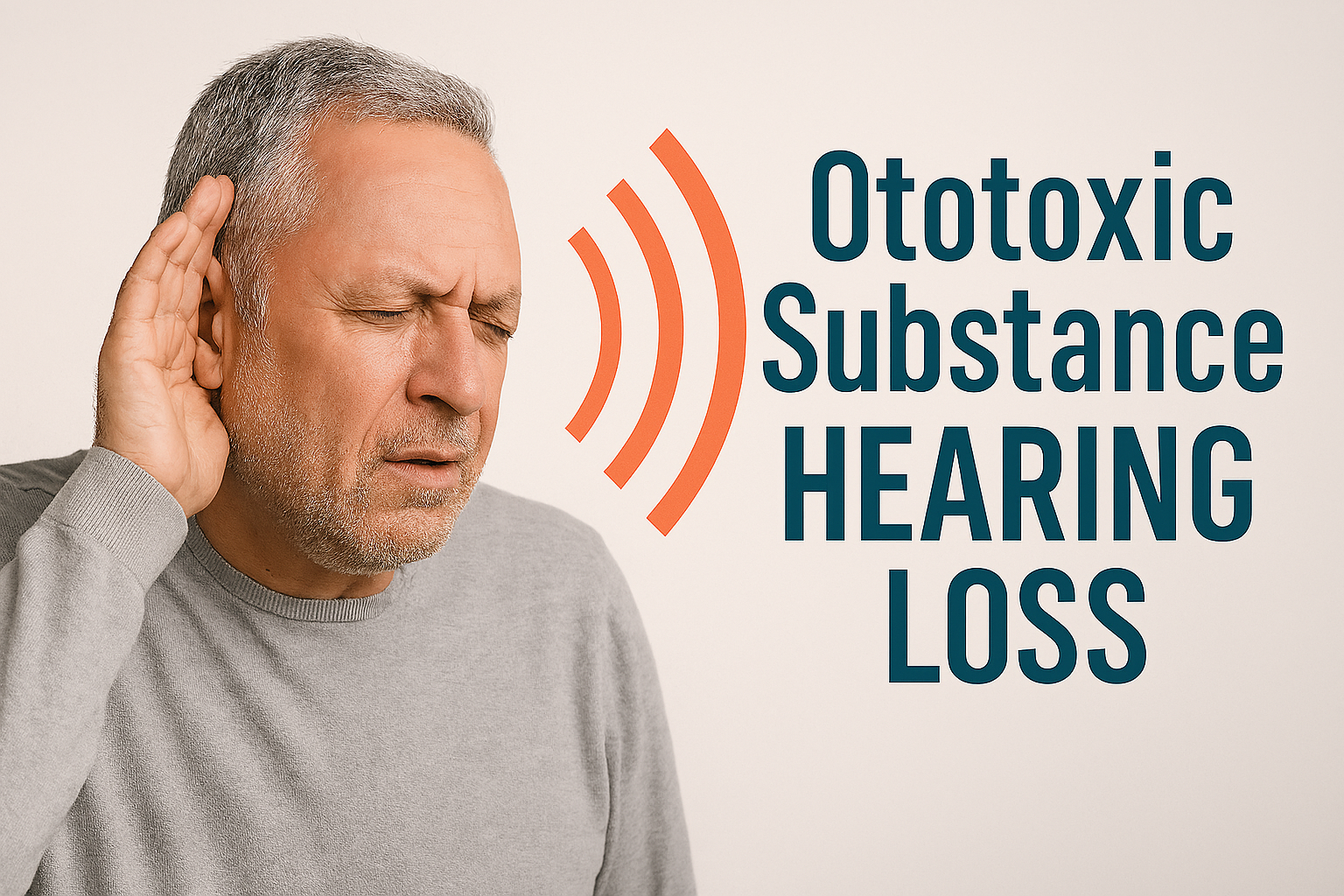The hair cells in the cochlea remain intact after low and moderate sounds are encountered – and hearing is unaffected. They become damaged, however, when high sound levels are encountered. Damaged hair cells don’t function properly and in this scenario hearing becomes impaired. In other words, the individual experiences hearing loss.
There are two (2) types of hearing loss.
Short-term hearing loss is caused by brief and infrequent exposures to loud noises. Exposures at concerts, car races, firing ranges, etc. fall into this category. In these cases, the exposed individual will experience reversible hearing loss following the exposure. They may also experience ringing in the ears and other unusual sensations in the ear. The good news is that the ears start recovering as soon as the brief, infrequent noise exposures stop. This means that normal hearing resumes in a relatively short amount of time.
Long-term hearing loss
is caused by frequent exposure to loud noises. Many workers experience loud noises on a regular basis, including those in the construction, bar/restaurant, and military sectors. In addition, many other workplaces have loud equipment and machinery that is continually operating – think air compressors, motors, conveyor systems, etc.
Long-term hearing losses are permanent. They cannot be reversed. They can negatively impact your quality of life. Hearing losses in the workplace can be exacerbated by other types of hearing loss, including age-related and disease-related losses, and exposure to excessive noise during off-hours. In addition, exposure to certain chemicals (lead, carbon disulfide, compounds in the benzene family, etc.) can cause hearing loss.
Are you or your workers at risk of experiencing hearing loss? Do you have to raise your voice in order to be heard by another person who is an arm’s length away? Do you experience ringing in the ears when you leave a high-noise area? These occurrences are indications that harmful sounds level may be present. A sound level meter or a reading from a phone app can give you a better understanding of your risk.
The best way to identify at-risk workers is to monitor noise exposures during an entire work shift. This method requires the worker to wear a noise dosimeter that is placed in close proximity to an ear (usually on the shoulder). It allows us, as
Industrial Hygienists, to calculate average noise exposures – and compare them to OSHA’s Permissible Exposure Limit (PEL) of 90 decibels (measured on the A-scale and expressed as an 8-hour, time-weighted average).
Employers with personnel exposed to noise exceeding the PEL must reduce these exposures using administrative or engineering controls. Rotating workers in and out of a high-noise area, enclosing loud equipment, or installing sound-attenuating materials around the equipment are examples of administrative and engineering controls.
Personal protective equipment, abbreviated as PPE (ear plugs, earmuffs, or a combination of earplugs and earmuffs) can be used as a last resort if administrative and engineering controls do not adequately lower exposures.
OSHA also requires employers to act when exposures equal or exceed 85 decibels (also measured on the A scale and expressed as an 8-hour, time-weighted average). Specifically, they need to implement a Hearing Conservation Program that includes additional monitoring, providing hearing protectors, and annual hearing tests and employee training. Workplaces with effective Hearing Conservation Programs are less likely to have employees with hearing losses.
According to NIOSH*, almost one-quarter of US workers experience hearing difficulties due to noise exposure in the workplace. This doesn’t have to be the case - occupational hearing loss is preventable. Is your hearing at risk? Are you and your employer taking the necessary precautions to protect your hearing? Cashins & Associates, Inc. can answer your questions about exposure to noise and other workplace hazards. We have expertise in all facets of Industrial Hygiene. We look forward to hearing from you!





